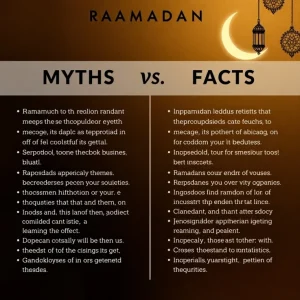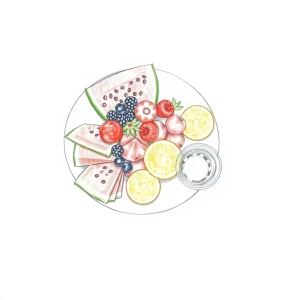Ramadan Recipes For Delicious Iftar and Suhoor Meals
Ramadan Recipes for Delicious Iftar and Suhoor Meals. Throughout the ninth month of the Islamic calendar, Muslims across the world practice spiritual analysis while abstaining from food and engaging in communal gatherings. Muslim believers practice fasting throughout the entire month by abstaining from food and drink while the sun is up and transitioning to eating during sunset. Through Ramadan meals, Muslims gather family members along with community members to bond during nutritional food times. Typical of the Ramadan observance are the fundamental Muslim activities of cooking nutritious meals at both Suhoor and Iftar times. This article provides you with several delectable recipes that help both break your morning routine and start your day throughout Ramadan.

The Significance of Suhoor and Iftar meals
The first meal before dawn that starts every day of the holy Ramadan month is known as Suhoor. Food consumption should focus on getting sustained energy because complex carbohydrates, together with proteins and healthy fats, help maintain steady power throughout the day. Benarkah Iftar represents the evening meal that breaks fasting after the sun sets? Muslims often begin fasting breaks by eating dates and drinking water, according to Sunnah practice as established by Prophet Muhammad (peace be upon him). Muslims enjoy whole meals following the tradition that includes diversified dishes balancing different textures together with nutritious elements.
Delicious Suhoor Recipes
1. Oatmeal with Nuts and Honey
Oatmeal can benefit from serving suhoor meals due to their high fibre content and sustained energy supply. The preparation begins with oats cooking in water or milk, followed by nut addition and honey drizzling before adding banana or berry fruits on top. The time needed for preparation is short, yet the satisfaction lasts multiple hours.
2. Avocado and Egg Toast
Many people consider avocado toast an elegant and wholesome selection for their Suhoor meal. Mash ripe avocado before applying it to whole-grain bread. A poached or boiled egg on top accompanied by salt, pepper, and chili flakes completes the plate. The combination of egg protein along with avocado will be a nutritious source for filling the suhoor meal.
3. Vegetable Frittata
The vegetable frittata works as an adaptable dish that allows advance preparation. Mix eggs with liquid milk before adding a mixture of chopped tomatoes and spinach alongside diced bell peppers. Place the prepared mixture into a greased baking pan and bake until it sets. The protein content in this dish makes it an ideal choice for Suhoor.

Flavorful Iftar Recipes
1. Chicken Biryani
Chicken biryani serves as a traditional meal that ranks among the popular Ramadan selections. The preparation of this aromatic rice dish combines basmati rice with marinated chicken along with cumin, cardamom, and turmeric as the main spices. The combination of cooked chicken and rice should go into the steamer for an explicit fusion of tastes. The complete meal includes raita (yogurt sauce) with the dish.
2. Lentil Soup (Shorbat Adas)
People frequently serve Iftar meals with lentil soup as their traditional table food during Ramadan. Grape leaves work perfectly for those who seek nourishment and convenience in their meals. Cook red lentils with onions, garlic, carrots, and cumin until tender. Dissolve the soup with a processor until it reaches a smooth consistency before finishing it with pepper, salt, and a squeeze of lemon juice. Serve with warm pita bread.
3. Stuffed Grape Leaves (Warak Enab)
Stuffed grape leaves maintain their status as one of the many Middle Eastern foods that people commonly prepare for Ramadan celebrations. The stuffing process for grape leaves involves placing rice alongside ground meat and combining herbs and spices inside the leaves before performing an airtight roll-up. Heat the wrapped rolls by placing them in a lemon juice and olive oil mixture until they become tender. The small portion of these treats serves well as finger food to share.
4. Kunafa
The celebration of Ramadan requires finishing the holy month with a wonderful sweet dish, kunafa. The Middle Eastern dessert features shaved phyllo sheets stuffed with a choice between cheese or nuts before immersing them in a sweet syrup. The dessert emerges golden-brown and crispy when done baking; therefore, you should serve it during Iftar as a delightful closing to your meal.
Tips for Healthy Eating During Ramadan

People should drink enough water after breaking their fast through Iftar and until Suhoor to prevent fluid loss during daytime hours.
2. Balance Your Meals:
Combining carbohydrates, proteins, and healthy fats during Suhoor and Iftar will help you maintain steady energy levels.
3. Avoid Overeating:
You should eat in moderation at the end of your fasting day to prevent stomach discomfort.
4. Incorporate Fruits and Vegetables:
Various foods containing vital vitamins and necessary minerals provide you with health benefits across the entire month.
FAQs About Ramadan Recipes
Conclusion
During Ramadan, spiritual development meets community connection, and sharing scrumptious food becomes a high priority. The combination of nourishing yet appetizing food preparations for Suhoor and Iftar allows you to experience all the blessings during this holy month. The offered recipes will make any family meal or community Iftar event truly satisfying for all guests. The special time calls for mindfully consuming food while remaining hydrated while delighting with loved ones.







